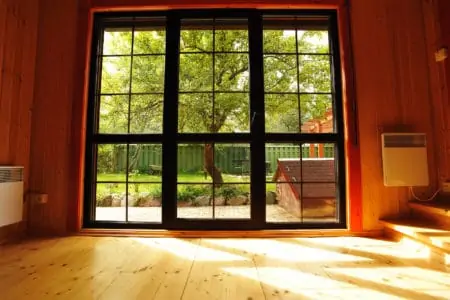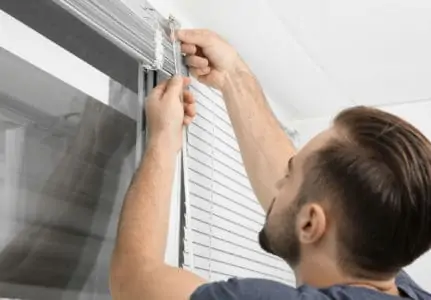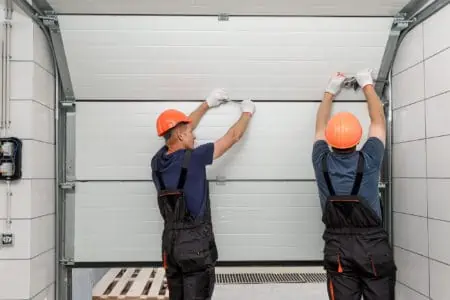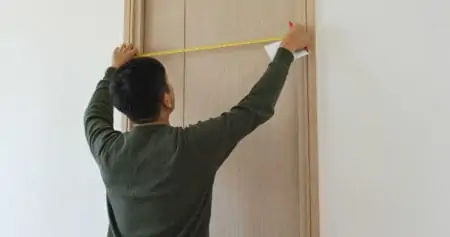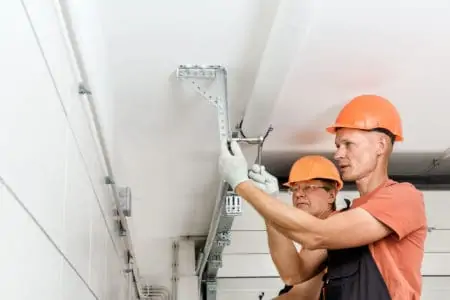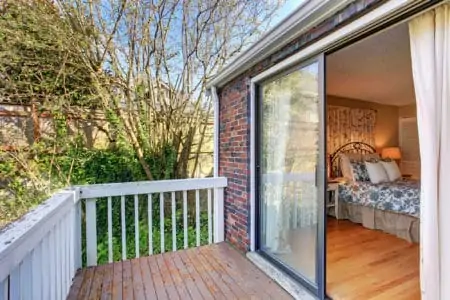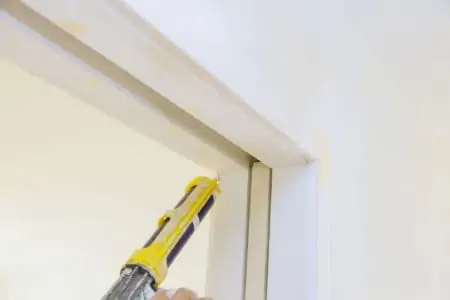Windows concentrate the sun’s rays, throwing heat into your home just like a radiator. This is welcome in the winter, but not in the middle of summer. Knowing how to block heat from windows will cool your interior spaces and save you from switching on the air conditioning.
We show you how to block the sun from windows using 16 different methods, from short-term fixes to permanent solutions.
Key Takeaways
- Block heat from windows using methods such as aluminum foil, bubble wrap, or weather stripping seals.
- Use window coverings like blackout shades, Roman blinds, or cellular shades to keep heat out.
- Apply reflective film or use greenery such as trees and trellises outside to reflect heat away from windows.
- Consider long-term solutions like exterior shutters, awnings, or energy-efficient windows to reduce heat gain.
How Much Heat Comes Through Windows?
About 40 percent of the heat in your home comes through the window. This is welcome in the dead of winter, but not in July when the sun is at its hottest.
It also matters which way your windows face. South-facing aspects get a lot more heat than northerly windows. So, if you are planning a remodel or new build, keep this in mind when placing the windows.
DIY Methods to Block Sunlight from Windows
There are long-term solutions to solve this problem, but they can be expensive. On the flip side, choosing the DIY route is cost-effective in the short term but may not be a permanent solution.
Cheap Ways to Block Heat from Windows
There are plenty of ways to block sunlight from heating your house, and it needn’t cost a lot to achieve. With a few simple changes, you can remove unwanted heat and make your living spaces more comfortable.
Use Aluminum Foil
Aluminum foil is an excellent way to block sunlight and heat from your windows. Measure each window for the correct foil size, and use clear scotch tape to secure it to the window pane.
You will notice the heat drop immediately as the sunlight bounces off the foil away from the house. Just warn the neighbors to wear sunglasses to protect them from the glare.
Once you cover the windows with foil, it will block your view outside and darken your interior spaces.
Bubble Wrap
Bubble wrap has the double bonus of reducing heat in the summer and lowering heat loss in the winter. It absorbs the sun’s rays, stopping them from penetrating inside your home. Just try to resist the temptation to sit there popping all those bubbles (because you know you want to).
Weather Stripping Seals
Some windows are drafty, especially in older houses. Weatherstripping seals reduce drafts, which is excellent in the winter, and minimize heat transfer in the summer.
Weatherstripping seals are an excellent long-term solution if installed correctly and kept in good condition. And they don’t cost a fortune either.
Window Coverings to Keep Heat Out
Your humble window coverings are an ideal way to reduce heat flooding through your windows. The Department of Energy recommends using shades as one of the most effective and affordable ways to block the sun’s heat.
Blackout Shades
One of the best ways to block heat is to remove all traces of sunlight. Blackout shades are perfect for light-sensitive people; however, these blinds turn day into night inside your home.
That’s fine if you are a vampire, but most of us like to let in some natural light.
Roman Blinds
Roman blinds were invented by the Romans (you knew that, right?) and were hung to stop dust from entering their homes. They are a suitable solution to reducing heat from the sun’s rays. You can also adjust Roman blinds to regulate the amount of light they let in.
Keep In Mind
For the best thermal protection, try using thicker material like velvet or heavy cotton.
Cellular Shades
Cellular shades are typically made of a pleated material that folds up at the top of your window. These shades have the highest R-value (a standard measurement of insulation), making them ideal for the winter and the summer.
According to the Department of Energy, correctly fitted cellular shades can reduce heat loss by 40 percent, and in the summer, heat gain by 60 percent (1).
Window Quilts
If you are looking for a window covering with heat-blocking material, window quilts tick that box. Window quilts have a sheet of quilted fabric that rolls up and down. It fits snugly against the trim and offers similar R-values as cellular shades.
Louvered Blinds
Sometimes called Venetian blinds, these horizontal-slatted window coverings are a good choice because you can angle them according to the sunlight. The advantage is you can still let light in, but you can reduce the solar glare.
When fully closed, they typically have reflective surfaces that deflect the heat gain. You can also angle the light upwards to deflect on a light-colored ceiling. Light ceilings are great for diffusing heat.
Curtains and Drapes
Curtains not only keep heat in, but they also block it out. Heavier materials have better thermal protection. Windows that receive direct sunlight project the most heat, so the drapes should be closed even during the daytime.
Studies have shown that doing this can reduce heat gain by 33 percent. Fit coverings like drapes as close to the window as possible with a drop reaching the floor (2).
What to Put on Windows to Reflect Heat
Sometimes you want to block heat gain and UV but still want a view outside. Using window treatments like reflective films on your glazed surface is a cheap way to achieve this. And they can be removed simply by peeling them off.
Reflective Film
Window films reduce heat gain and solar glare, and also protect the window’s surface. They are a great option if you have a window that is difficult to fit other coverings on. You also get UV protection for your furniture and artwork.
Some modern reflective films have virtually no glare and still offer the same qualities of protection. Using window treatments requires more cleaning and attention because to reflect sunlight, they absorb UV radiation.
Keep In Mind
Because reflective films can damage insulated glazing unit seals, most manufacturers will void their warranty if you opt to cover your window.
Draping a cotton sheet over your window is an effective way to reduce solar heat. It is easy to install and can be removed just as simply. The advantage is it still lets in natural light, casting a cool shade over the room.
The disadvantage is it doesn’t look that great from the outside.
Using Greenery
The solution to reducing heat from your window might not lie indoors but in the garden instead. The amount of light hitting your windows can be directly affected by the types of planting in your garden.
Plant Trees
Trees not only block light but also improve the aesthetics of your garden. Nothing quite beats the dappled light that leaves throw on your interior spaces. Also, trees absorb carbon, so if you live in an area with lots of traffic, it will help clean the air.
Don’t plant the tree too close to the house. The roots could cause structural damage to your building as the tree grows.
Trellis
Installing a trellis is another simple solution to reducing heat gain through your windows. Planting climbers that spread across the trellis shields the window from the sunlight and frames the outside of the house beautifully.
Long Term Solutions
If you have the budget, it may be worth considering investing for the long term. It means an expensive one-off payment, but you will be protected against heat gain for years to come.
Exterior Shutters and Shades
Shutters are made from a variety of materials, including wood, plastic, metal, and aluminum. Some are manually operated, while others use a crank handle inside the home.
Roller shutters hang above the window and roll down using a metal frame to guide the slats. They not only offer heat protection, but they also improve security. Unfortunately, they don’t look that attractive.
Awnings
Awnings attach to the outside wall of your home and extend out to obscure the window from the sun’s UV rays. They have the added advantage of screening you when you are in the garden.
Awnings extend mechanically either by an electrically-operated switch or a hand crank. According to the DoE, window awnings can reduce the heat gain on south-facing windows by as much as 65 percent. West-facing windows fare even better with reductions of 77 percent.
Energy-Efficient Windows
The ultimate solution to reducing solar heat gain is to replace all your windows. This would be expensive, but it would offer a permanent fix to the problem. Double glazed windows shrink the heat gain by 50 percent and triple glazed windows by a further 30 percent.
Replacing your windows could be an option if your existing windows are old or worn. We would never recommend replacing your windows if your existing glazing is in good condition.
FAQs
Turn Down the Heat
It seems alien to block sunlight from flooding into our homes, but it can make internal spaces unbearable for some people. We all welcome additional heat in the winter, but in summer, you want to cool down.
Solar heat adds dollars to your electricity bill because your air conditioning has to work even harder to bring the temperature down. Covering your windows to block heat is better for your wallet, and your AC will thank you.
